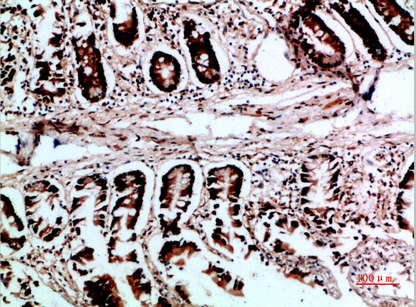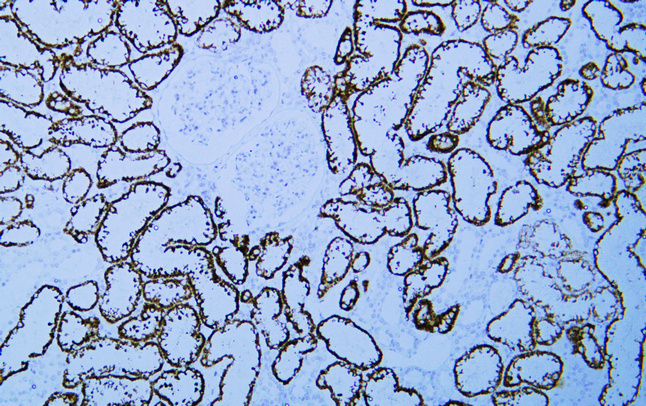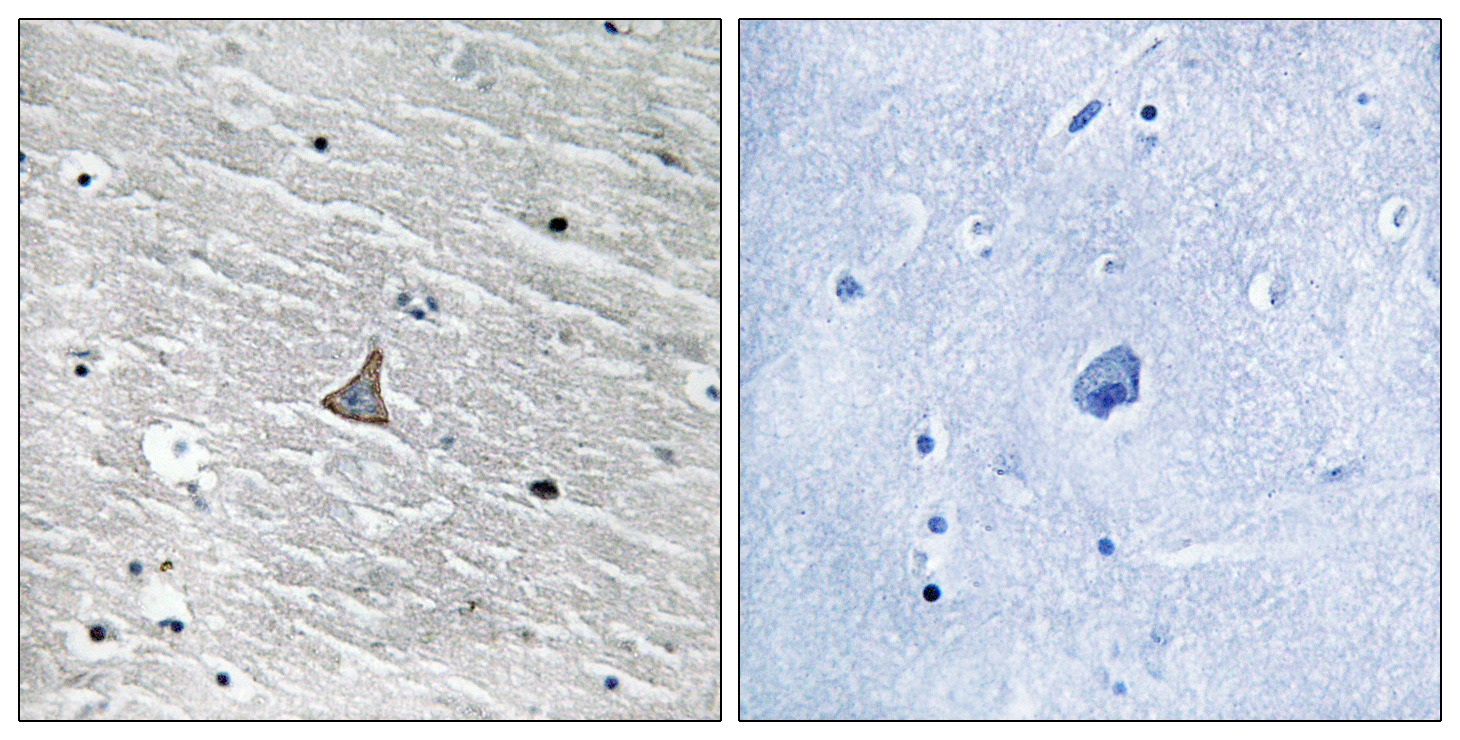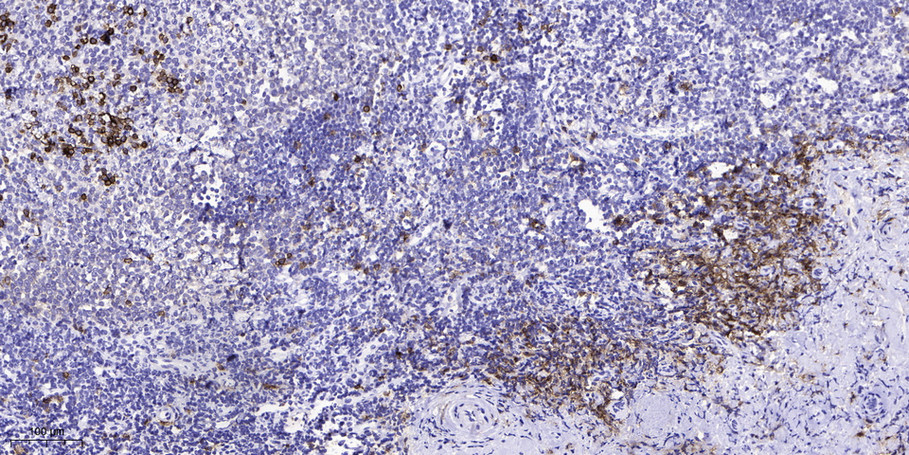VHL Polyclonal Antibody
- Catalog No.:YT5988
- Applications:IHC;IF;ELISA
- Reactivity:Human;Rat;Mouse;
- Target:
- VHL
- Fields:
- >>HIF-1 signaling pathway;>>Ubiquitin mediated proteolysis;>>Pathways in cancer;>>Renal cell carcinoma
- Gene Name:
- VHL
- Protein Name:
- Von Hippel-Lindau disease tumor suppressor (Protein G7) (pVHL)
- Human Gene Id:
- 7428
- Human Swiss Prot No:
- P40337
- Mouse Gene Id:
- 22346
- Mouse Swiss Prot No:
- P40338
- Immunogen:
- The antiserum was produced against synthesized peptide derived from the N-terminal region of human VHL. AA range:1-50
- Specificity:
- The antibody detects endogenous VHL
- Formulation:
- Liquid in PBS containing 50% glycerol, 0.5% BSA and 0.02% sodium azide.
- Source:
- Polyclonal, Rabbit,IgG
- Dilution:
- IHC 1:50-200, ELISA 1:10000-20000. IF 1:50-200
- Purification:
- The antibody was affinity-purified from rabbit antiserum by affinity-chromatography using epitope-specific immunogen.
- Concentration:
- 1 mg/ml
- Storage Stability:
- -15°C to -25°C/1 year(Do not lower than -25°C)
- Other Name:
- Von Hippel-Lindau disease tumor suppressor (Protein G7;pVHL)
- Observed Band(KD):
- 19-24kD
- Background:
- von Hippel-Lindau tumor suppressor(VHL) Homo sapiens Von Hippel-Lindau syndrome (VHL) is a dominantly inherited familial cancer syndrome predisposing to a variety of malignant and benign tumors. A germline mutation of this gene is the basis of familial inheritance of VHL syndrome. The protein encoded by this gene is a component of the protein complex that includes elongin B, elongin C, and cullin-2, and possesses ubiquitin ligase E3 activity. This protein is involved in the ubiquitination and degradation of hypoxia-inducible-factor (HIF), which is a transcription factor that plays a central role in the regulation of gene expression by oxygen. RNA polymerase II subunit POLR2G/RPB7 is also reported to be a target of this protein. Alternatively spliced transcript variants encoding distinct isoforms have been observed. [provided by RefSeq, Jul 2008],
- Function:
- disease:Defects in VHL are a cause of pheochromocytoma [MIM:171300]. The pheochromocytomas are catecholamine-producing, chromaffin tumors that arise in the adrenal medulla in 90% of cases. In the remaining 10% of cases, they develop in extra-adrenal sympathetic ganglia and may be referred to as "paraganglioma." Pheochromocytoma usually presents with hypertension. Approximately 10% of pheochromocytoma is hereditary. The genetic basis for most cases of non-syndromic familial pheochromocytoma is unknown.,disease:Defects in VHL are a cause of renal cell carcinoma type 1 (RCC1) [MIM:144700]; also called hypernephroma or adenocarcinoma of kidney. Familial renal cell carcinoma syndromes form a group of diseases characterized by a predisposition to development of renal cell carcinomas (RCCs) with various histological subtypes.,disease:Defects in VHL are the cause of erythrocytosis familial type
- Subcellular Location:
- [Isoform 1]: Cytoplasm. Membrane; Peripheral membrane protein. Nucleus. Found predominantly in the cytoplasm and with less amounts nuclear or membrane-associated. Colocalizes with ADRB2 at the cell membrane.; [Isoform 3]: Cytoplasm. Nucleus. Equally distributed between the nucleus and the cytoplasm but not membrane-associated.
- Expression:
- Expressed in the adult and fetal brain and kidney.
- June 19-2018
- WESTERN IMMUNOBLOTTING PROTOCOL
- June 19-2018
- IMMUNOHISTOCHEMISTRY-PARAFFIN PROTOCOL
- June 19-2018
- IMMUNOFLUORESCENCE PROTOCOL
- September 08-2020
- FLOW-CYTOMEYRT-PROTOCOL
- May 20-2022
- Cell-Based ELISA│解您多样本WB检测之困扰
- July 13-2018
- CELL-BASED-ELISA-PROTOCOL-FOR-ACETYL-PROTEIN
- July 13-2018
- CELL-BASED-ELISA-PROTOCOL-FOR-PHOSPHO-PROTEIN
- July 13-2018
- Antibody-FAQs
- Products Images

- Immunohistochemical analysis of paraffin-embedded human-colon, antibody was diluted at 1:200


